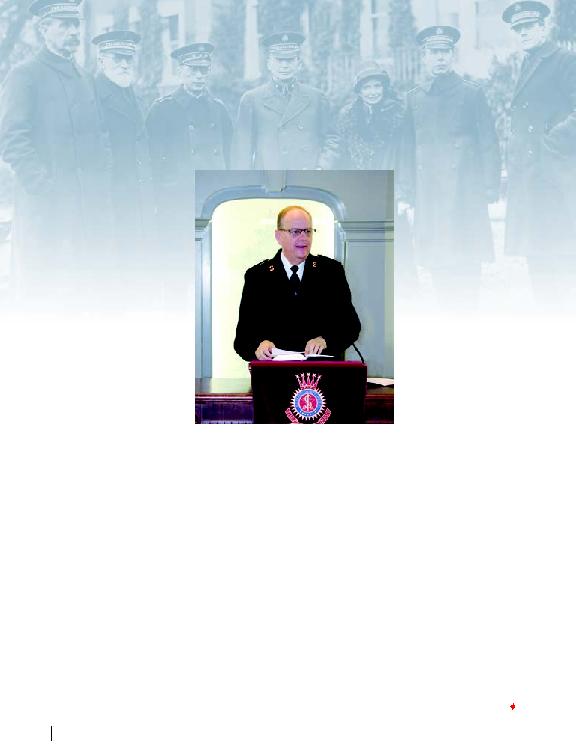
vation Army's rich history,
there have been 20 Gener-
in the Army's highest levels of
leadership that threatened to
tear the Army apart and lead to
its demise. At stake was nothing
less than the Generalship of our
Army. The agonizing delibera-
tions provide us with an iRony
to remember.
the Army's Supplementary Deed
of Constitution in 1904, solely to
allow for the removal of a sitting
General in the event that he or
she became unfit for office. Before
1928, the normal method of nam-
ing a new General--for whatever
reason--was by the sealed enve-
lope provided by the Army's 1878
Deed Poll. Between 1878 and 1929, some 50-plus years,
the sealed envelope was employed only once: in 1912, at
the Promotion to Glory of General William Booth.
was the first son of William and Catherine, and he had
worked alongside his father as Chief of the Staff since
the beginning.
his own. The identity of the name he chose will forever
remain a mystery. The envelope was burned unopened
after the stunning conclusions in Britain's courts follow-
ing the High Council's action.
well Booth's rapidly decreasing health finally brought
a high noon showdown to reality and triggered the un-
thinkable: a High Council decision on whether or not to
ous months, read General John
Larsson's A Crisis That Shaped
the Salvation Army's Future
consider these results. The High
Council sadly concluded that
General Bramwell Booth's health
would only worsen, and that, for
the good of the Army's future, he
should be relieved of command.
It was agreed that the General
should be allowed to retire honor-
ably, and that he retain his rank
during his remaining years on
earth. After several ballots, Com-
missioner Edward Higgins was
elected the Army's third General
and it was decided that all future
Generals would be elected by the
High Council.
were all Booths: his daughter, Commissioner Catherine
Booth; his wife, Mrs. General Florence Booth; and his
flamboyant sister, Commander Evangeline Booth.
was to be the second many years earlier. Catherine had
youth, an impressive career history and, most impor-
tantly, she had the Booth name.
1929 Bramwell seemed ensconced. It would have been
so for his likely successor, Commissioner Catherine
Booth, who lived to be 104!
she would have been the third International Leader of
The Salvation Army for a whopping 58 years!
way, it is unlikely that there would have been
19 Generals prior to General Andr� Cox.